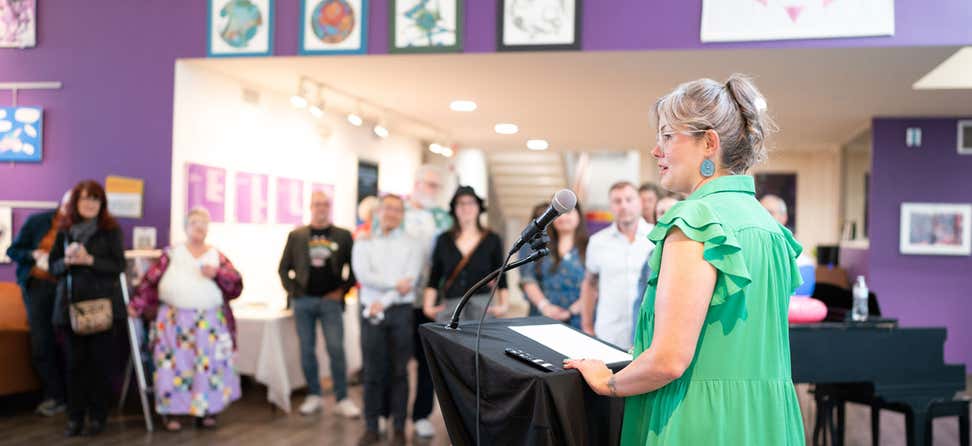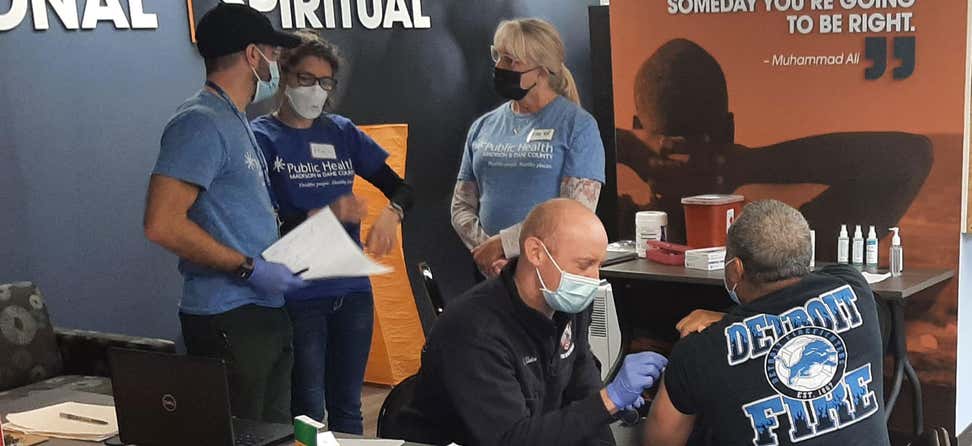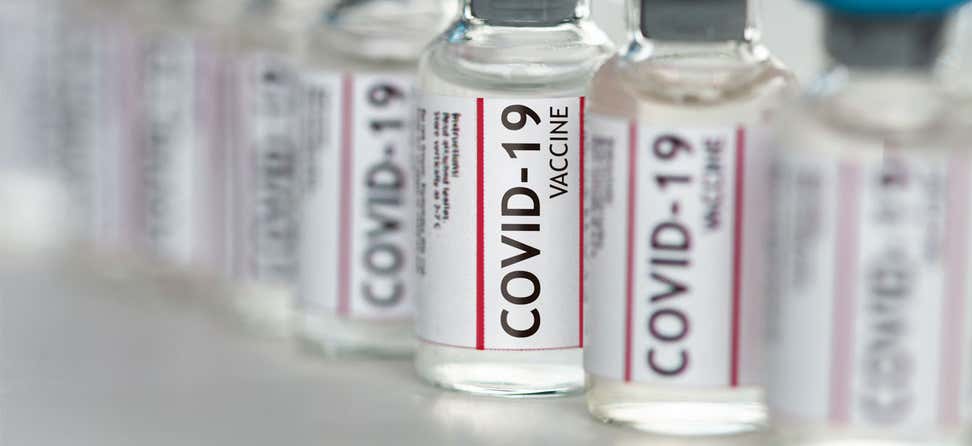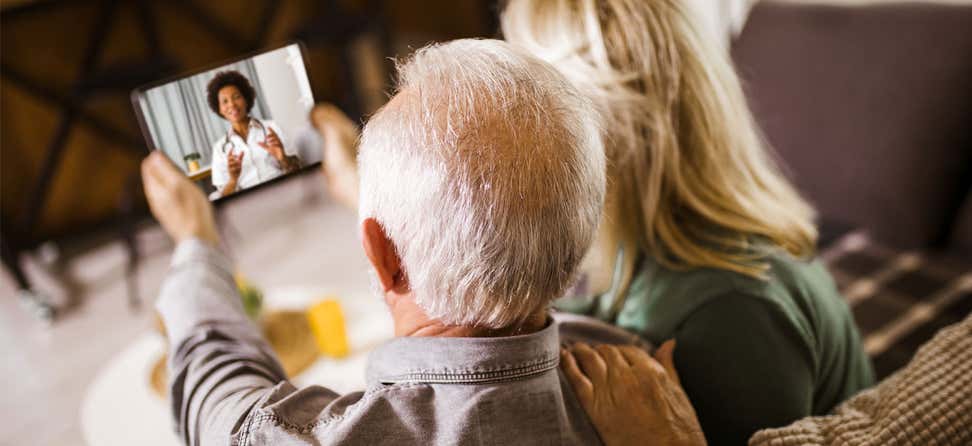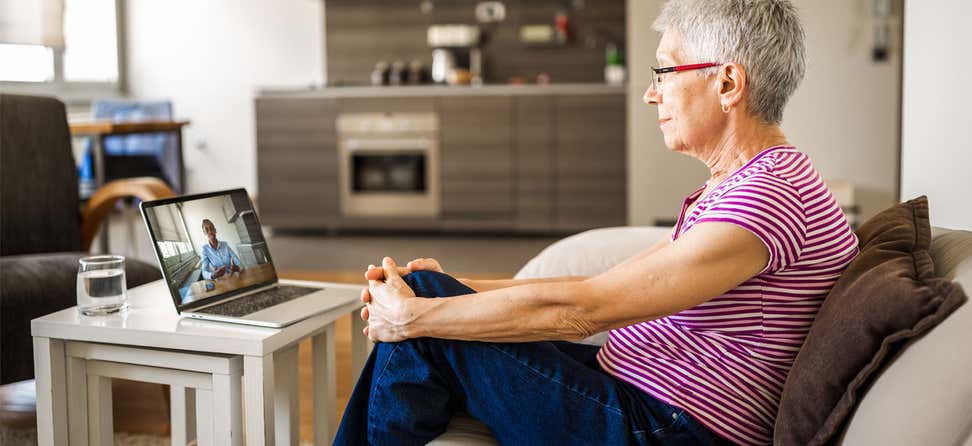Key Takeaways
Get answers to your COVID-19 and technology questions, like where older adults can get free or discounted tablets or how to access the Internet.
Discover technology to help you deliver workshops more efficiently.
This list of frequently asked questions can help with connecting older adults to technology and internet services during the COVID-19 pandemic. If you have any other questions about technology services, please email healthyaging@ncoa.org.
Where can I get free or discounted tablets and devices?
- Work with your Area Agency on Aging to see if they can assist with providing tablets.
- Contact technology companies and cell phone providers to inquire if they are open to partnering and donating older models of devices to aging groups. For example, NCOA’s Aging Mastery Program partnered with Verizon a few years ago to provide 200 tablets for older adults. New York City has partnered with T-Mobile to provide internet and tablets to 10,000 New York City Housing Authority older adults. Examples have also been shared during the monthly Grand Rounds presentations.
- Consider purchasing devices in bulk and inquire about the cost differences between new and refurbished options.
- Check around your community for any technology (i.e. iPad, tablet) lending libraries and ask if they have implemented cleaning protocols in response to COVID-19. Research whether participants can borrow a tablet for the duration of a program. For a sample lending library agreement, view a template from South Dakota State University.
iPad-Agreement-Form-BCBH-SD
- If the participant resides with family members, see if they can borrow a device to access services, engage with others, or participate in a health promotion workshop.
What are some resources for older adults to get internet access?
- The Federal Communications Commission (FCC) started an Emergency Broadband Benefit (EBB) to help individuals get connected during the pandemic. The benefit provides:
- a discount of up to $50/per month toward broadband services for eligible households and up to $75/per month for households on qualifying Tribal lands.
- a one-time discount of up to $100 to purchase a laptop, desktop computer, or tablet from participating providers if they contribute more than $10 and less than $50 toward the purchase price.
Find out more about eligibility and how to apply by visiting the FCC’s website.
- If older adults reside in an assisted living community, check to see if the building management company provides internet service.
- Negotiate a plan with local cable providers for individuals or group purchasing.
- Depending on the individual’s insurance, they may qualify for free or low-cost smartphone and data plan access. For this who qualify for Medicaid, SafeLink Wireless and Assurance Wireless are two services that provide this as part of the EBB.
- For individuals who need assistive technology, the National Assistive Technology Act Technology Assistance and Training (AT3) Center has a program directory by state.
- The FCC shared a list of companies that have developed economical broadband programs to support consumers throughout the US during the pandemic.
Can we use a portion of our funding to equip older adults with devices?
The Administration for Community Living (ACL) has provided the following guidance:
“Under the authority of the Major Disaster Declaration, which all States are operating under currently, Older Americans Act monies are allowed to be bucketed into any Title to meet the needs of older adults. These needs may include programming at a congregate site, such as telephone reassurance, wellness checks, virtual evidence-based health promotion/disease prevention programs. In addition, meals provided in a group setting that are eaten with another person (virtually), such as coordinating a buddy system or virtual congregate site via Zoom, FaceTime, GoToMeeting, etc. where people dine together can also be implemented using Older Americans Act dollars. Further, Older Americans Act dollars can be used to purchase tablets or laptops for seniors and provide access to Broadband, among other local needs of older adults. ACL’s COVID-19 resources provide more detail on how this can be done. Contact your State Unit on Aging for additional information about use of Older Americans Act monies in your state.”
What are some resources to help older adults learn the basic functions of their devices and connect with others online?
- Senior Planet provides a Technology Helpline (Monday-Friday 9 am- 5 pm EST, 888-713-3495) and hosts free online classes for older adults on topics including an introduction to social media, how to use zoom, and virtual social gatherings.
- Cyber-Seniors provides free technology support and training for older adults.
- Oasis Everywhere offers classes on a variety of topics such as how to get connected to technology, history, art appreciation, exercise, and environmental sustainability.
- GetSetUp is a place for older adults to learn, connect, and share with peers in small class settings. They also work with organizations to offer customized learning programs.
- AARP TEK workshops are free of charge to the public.
- Well Connected by Covia is a free, virtual community that offers phone and online activities that build community through group conversations, games, and education.
- One Mind Psyber Guide is a website that helps find trustworthy apps related to specific conditions or treatments.
- Instructions for Accessing Your Virtual Workshop through Zoom
- There is a free app “Easy Tablet Help for Seniors” on all tablets distributed to older adults. It is available at no cost in the Apple, Google Play, and Amazon App Stores. Note: There are no ads or in-app purchases.
What are some technology resources that I can use to help improve the workshop experience for participants?
Accessibility
- Captioning
- Many services like Zoom, Facebook, and YouTube offer captioning services. The University of Washington provides guides on how to add captions to different services:
- Adding captions in Zoom
- Adding Captions to YouTube Videos
- Adding Captions to Facebook Videos
- Many services like Zoom, Facebook, and YouTube offer captioning services. The University of Washington provides guides on how to add captions to different services:
- The American Bar Association provides an accessibility checklist with considerations before holding your next workshop.
- The American Association on Health & Disability provides Virtual Platform Accessibility Tips with steps to take into account before and during a presentation, as well as guides for commonly used platforms like Zoom, Google Hangouts, Microsoft Teams, etc.
- For those programs that allow hybrid delivery of a program, be sure to consider the needs of in-person and remote participants. Spoken with Authority provides a Hybrid Meeting and Event Checklist.
- Consider ways to reduce your background noise such as using the app, Krisp. Krisp is an AI-powered app that removes background noise and echo from meetings. The first 240 minutes a week are free.
Text Message Reminders
- The University of Oklahoma and others are using text messages to help with class reminders and retention. Below are some services that offer text messaging for organizations:
- Google Voice/Zoom Phone—These services offer text message abilities as a part of their service.
- Simple Text—Rate: $75/month for 2,000 messages and up to 5 users
- Tavoca—Rate: 5 cents per message, minimum $50/month
- ZipWhip—Rate: $49/month for unlimited messages and up to 3 users
- Textedly—Rate: Starting at $24/month for 1,200 messages, with packages varying in cost and volume
If you have other technologies that you are using to improve the workshop experience, feel free to email us at healthyaging@ncoa.org.
Keep up with the latest in technology and aging by joining an online community that focuses on assisting older adults to get connected to technology such as Aging Connected or the National Digital Inclusion Alliance.



